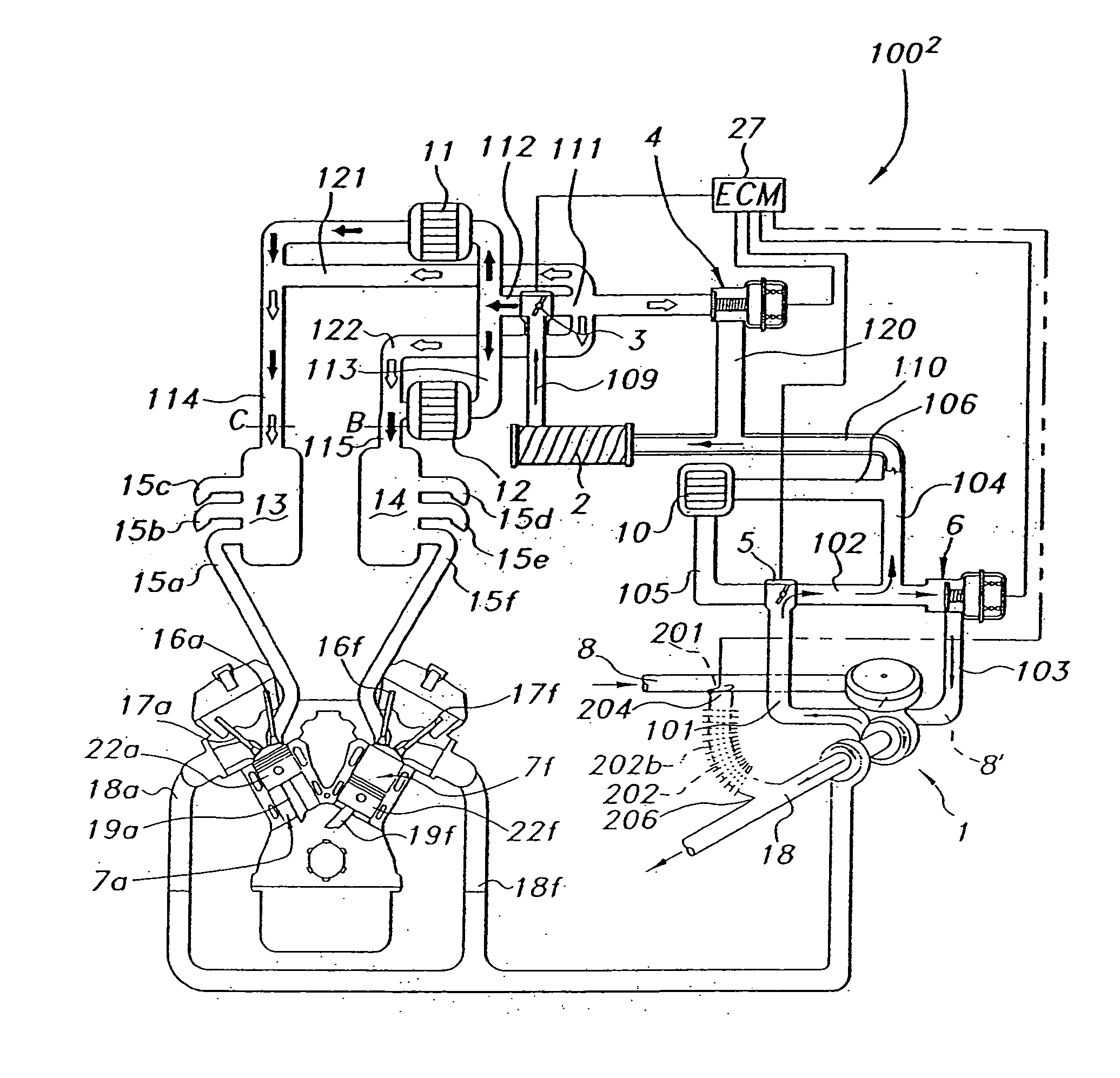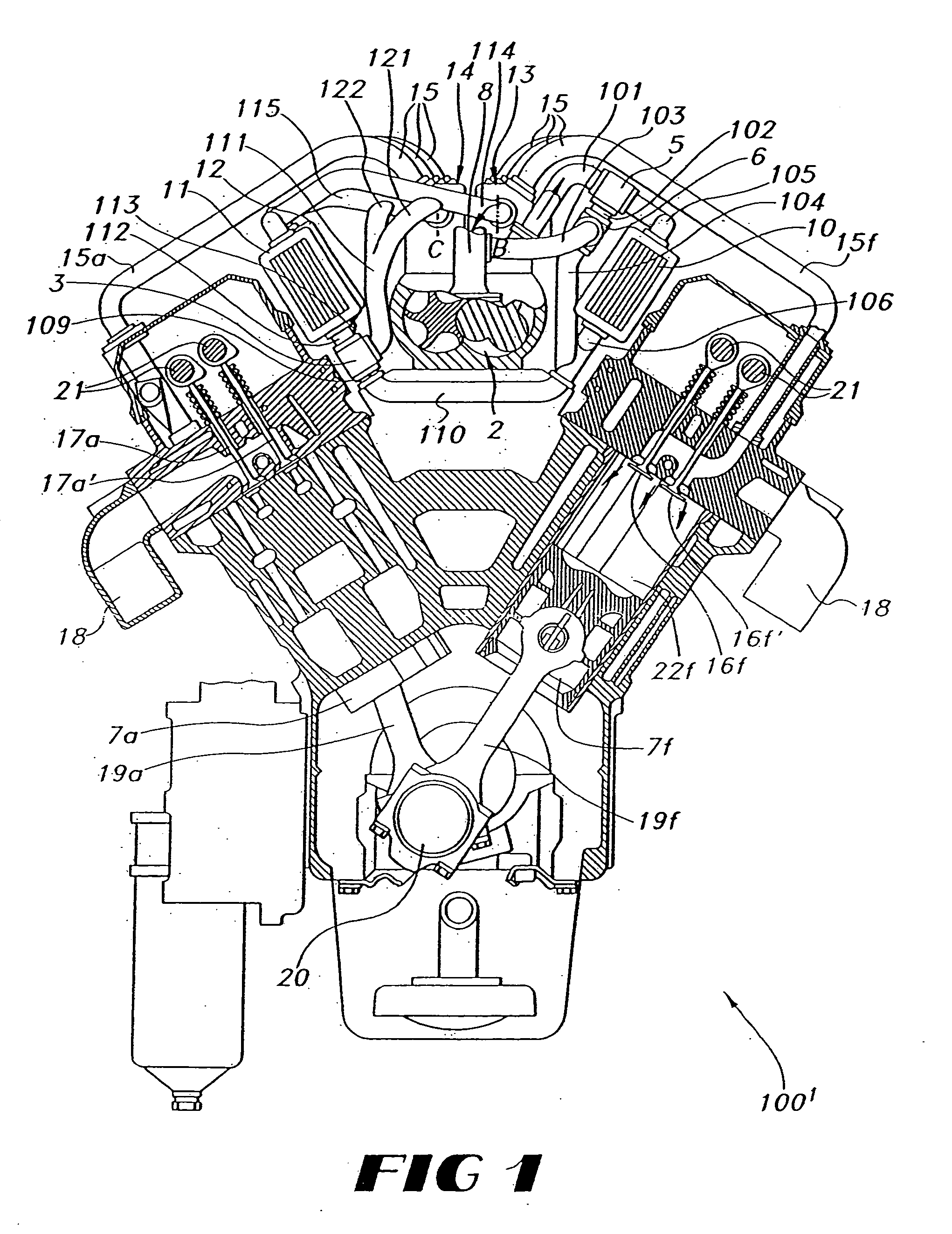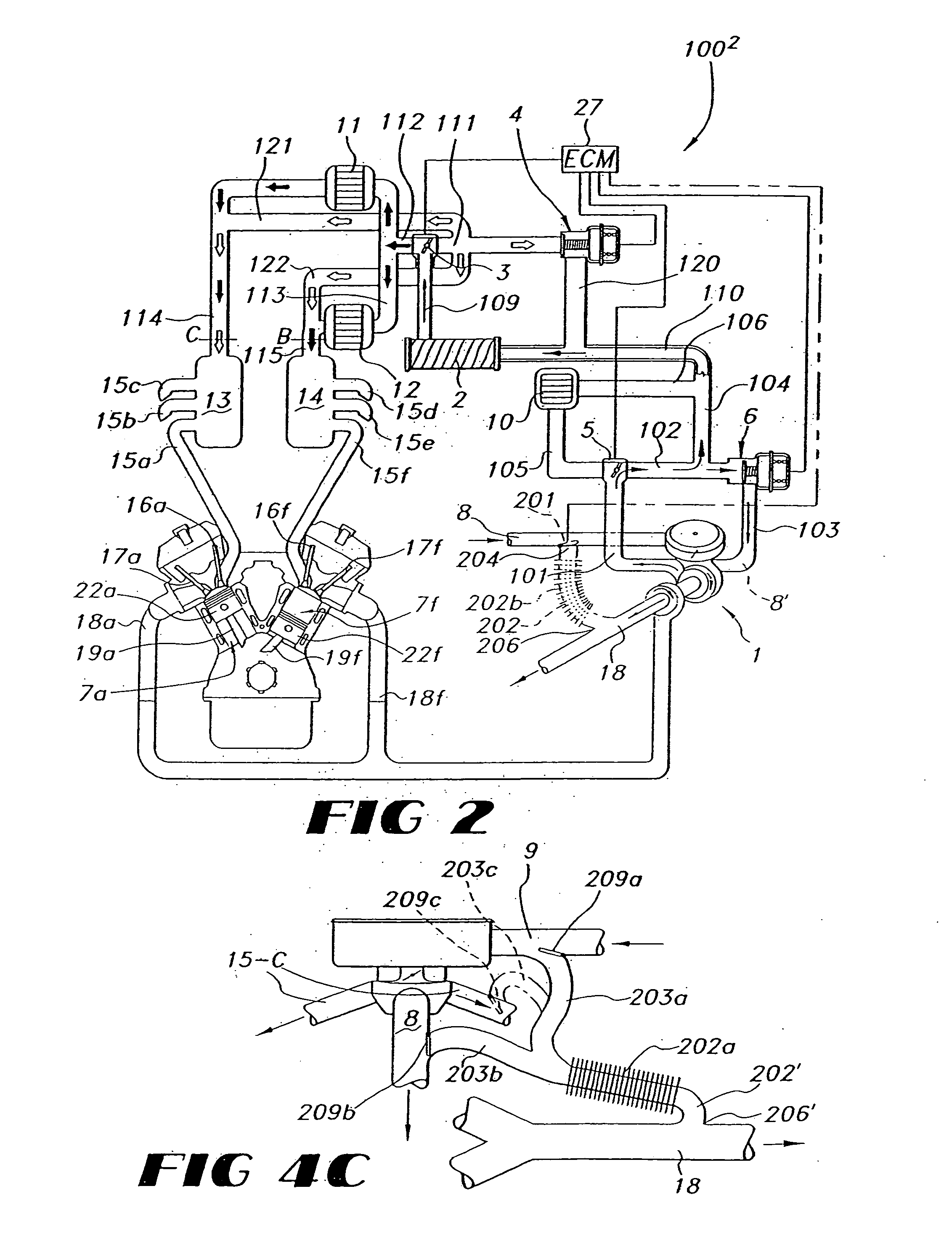Internal combustion engine and working cycle
- Summary
- Abstract
- Description
- Claims
- Application Information
AI Technical Summary
Benefits of technology
Problems solved by technology
Method used
Image
Examples
Example
DETAILED DESCRIPTION OF THE DRAWINGS
[0052] With reference now in greater detail to the drawings, a plurality of alternate, preferred embodiments of the apparatus of the Improved Internal Combustion Engine 100 of the present invention are depicted. Like components will be represented by like numerals throughout the several views; and, in some but not all circumstances, as the writer might deem necessary (due to the large number of embodiments), similar but alternate components will be represented by superscripted numerals (e.g., 1001). When there are a plurality of similar components, the plurality is often times referenced herein (e.g., six cylinders 7a-7f), even though fewer than all components are visible in the drawing. Also, components which are common among multiple cylinders are sometimes written with reference solely to the common numeral, for ease of drafting—e.g. piston 22a-22f=> piston 22. In an effort to facilitate the understanding of the plurality of embodiments, (but ...
PUM
 Login to View More
Login to View More Abstract
Description
Claims
Application Information
 Login to View More
Login to View More - R&D
- Intellectual Property
- Life Sciences
- Materials
- Tech Scout
- Unparalleled Data Quality
- Higher Quality Content
- 60% Fewer Hallucinations
Browse by: Latest US Patents, China's latest patents, Technical Efficacy Thesaurus, Application Domain, Technology Topic, Popular Technical Reports.
© 2025 PatSnap. All rights reserved.Legal|Privacy policy|Modern Slavery Act Transparency Statement|Sitemap|About US| Contact US: help@patsnap.com



